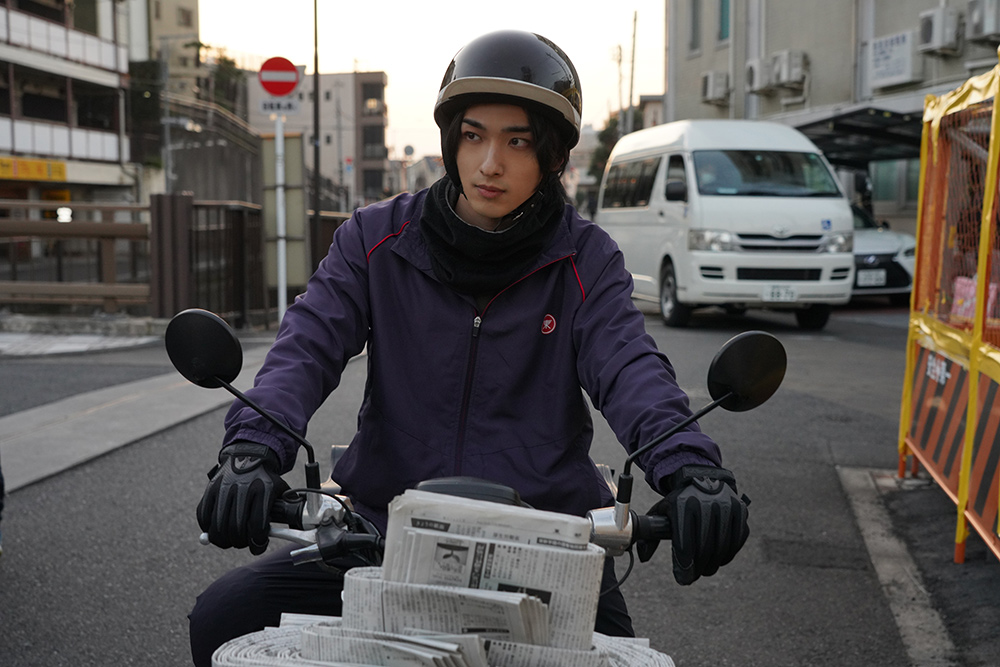![Director Michito Fujii of the Netflix series "The Journalist" talks about eras and generations. The key is “making it your own” [Director's Interview Vol.173]](https://cinemore.jp/images/aa7f08df682e29ca868df0fa0afe200888ecff5fa9a7f4cc797fa35f17d81a30.jpg)
Director Michito Fujii of the Netflix series "The Journalist" talks about eras and generations. The key is “making it your own” [Director's Interview Vol.173]
The feature film " Yakuza and the Family ", the short film "DIVOC-12", the TV drama " Avalanche ", the web drama "Miniature Garden Lemmings", " The Company Is Not a School New Generation Counterattack Edition ", the anime "Ghost in the Shell SAC_2045 Sustainable War" --. In 2021, the "breadth" that director Michihito Fujii shows us has expanded even further.
And in 2022, he will make his "return" to Netflix. The film " The Journalist " (2019), which won the Japan Academy Prize for Best Picture, Best Actor, and Best Actress, is rebooted into a six-episode drama "The Journalist." Star Sands' head Kawamura Mitsutsune continues to plan and produce, and the script is written by Yamada Yoshitatsu, Kodera Kazuhisa, and Director Fujii. The drama has evolved into an ensemble drama in which the fate of people changes drastically, including The Journalist Matsuda Anna (Yonekura Ryoko), secretary to the prime minister's wife Murakami Shinichi (Ayano Go), university student Kinoshita Ryo (Yokohama Ryusei), national civil servant Suzuki Kazuya (Yoshioka Hidetaka) and his wife Mayumi (Terajima Shinobu), and others, in relation to a state-sponsored public document tampering case.
The new "The Journalist" will blow your mind with its sharper, deeper story, theme, and quality. Director Fujii pursued "contemporaneity," as represented by the phrase "making it personal." We asked Director Fujii about his present and future, absorbing the latest movies and dramas from around the world and weaving in his creative vision.
Index
- Introducing the "city perspective" that wasn't present in the film version
- The dynamic "Avalanche" and the static "The Journalist"
- Differences with South Korea, a social film powerhouse
- The idea of being “seen around the world” in the character name
- What Netflix titles has Director Fujii watched recently?
Introducing the "city perspective" that wasn't present in the film version
Q: When comparing the movie version of "The Journalist" and the Netflix series "The Journalist," I think the biggest difference is whether or not there is a perspective from the common people, as represented by Ryo Kinoshita (Ryusei Yokohama). I heard that they tried to include a role for a convenience store clerk in the previous movie version, but it was difficult due to scheduling issues.
Fujii: When I was offered the movie, I clearly remember proposing that Gaku Hamada and others play convenience store clerks. (In the proposal) it says "bureaucrats and the media," but the convenience store clerks who are lining up the newspapers surely don't see what's inside. I wanted to get closer to those people through the eyes of the citizens, but just before filming started, we were told that it would be too late. So I decided to just be pragmatic and say, "I'll make it a good one with the current flow," and I started working on the movie.
After that, when it was decided to make it into a TV drama and I was given a four- or five-hour time slot, I said that that was the first thing I wanted to do. Since I had already done the structure of the media and those who protect the country in a movie, I wanted to deliver this work to the audience as an ensemble drama featuring The Journalist played by Ryoko Yonekura, a bureaucrat played by Go Ayano, and a newspaper delivery man played by Ryusei Yokohama.

Netflix series “The Journalist” will be distributed exclusively worldwide on Netflix from January 13, 2022 (Thursday)
Q: Director Fujii has consistently depicted incidents and society from the perspective of ordinary people in films such as " Light and Blood " (2017) and "Nameless Piece" (2014).
Fujii: Maybe that's my weakness as a director. I'm the kind of person who can't write or film unless I make it my own, so when I was writing about a woman named Mari (Komatsu Nana) in "10 Years Left to Live" (released March 4, 2022), I sometimes wondered where I should create a connection between myself and her. This time, I was able to write about the character Ryo, and I was able to make it my own. I remembered my college days and projected myself into the story.

